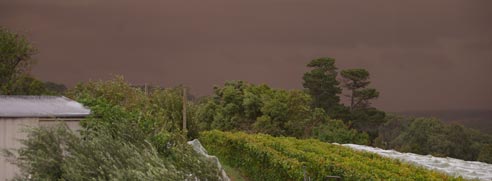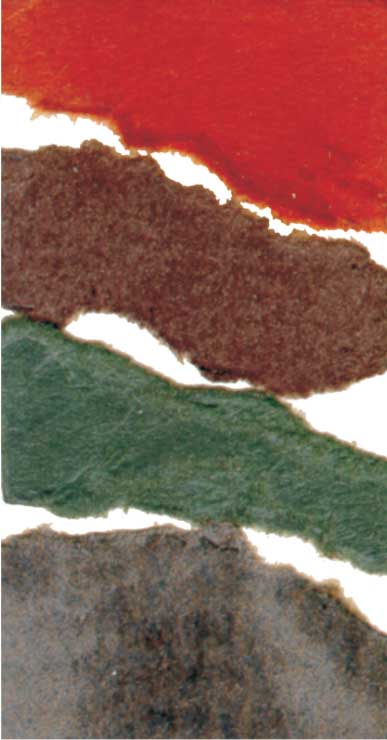
History Background and winemaking philospphy
The vineyard and winery were established in 1991 by Anthony and Pauline Miceli, after a search for a cool area with suitable slopes, aspect, and soils for the production of ultimate quality wines from the Burgundian varieties Pinot Noir and Chardonnay. Pinot Grigio was added in 1997.
Miceli – Background Information
We are in the Mornington Peninsula Geographical Indication (a sub region of Port Phillip District).
We are in the (unofficial) Main Ridge Wine Area, which along with the Red Hill area is in the higher and cooler southern part of the Mornington Peninsula. There is indeed a large variation in climate over this quite small region, with harvest dates in the northern, lower parts being 4-5 weeks before ours (we are the very latest, being on the edge of Arthurs Seat, the highest point on the peninsula).
Our altitude is 250m above sea level, our mean Jan temperature is 18.3 deg C approximately, heat summation 1220 degreee days , rainfall 1020 mm (growing season 600 mm). Other areas of the peninsula have rainfall totals closer to 600 mm.
Our soil is mainly Kraznozem, a red, deep well drained, medium clay, volcanic-derived, mildly acidic soil with no distinct subsoil layer. Part of the vineyard is situated on granitic derived coarse sandy-clay, with grey sandy topsoil and orange subsoil. In between these soils are several gradations. All of these soils are well drained, reasonably high in organic matter, contain no significant rocks and are stable to cultivation and trafficking (within reasonable limits). These favourable soils allow deep rooting and good moisture holding capacity which give the vines a very stable moisture and nutrient availability, resulting in only mild levels of stress ever being present, and preventing sudden swings. I think this is a major quality factor, as rapid drying and sudden wetting which occur in shallow root zones reduces fruit quality.
***** The map of soil types was used as the basis for our label logo design.
The vineyard site is virtually frost free, we have never experienced a frost during the growing season, owing the the reasonably steep NW slopes and proximity to the sea on 3 sides. The slope and aspect also protect us to a large extent from fog, which gives us a much sunnier individual site than many others in the area.
Whilst partly protected by topography we do have problems with wind and regularly experience some breakage of canes, though we have adapted our trellis structures and wire positioning to minimise this. We have also planted some windbreaks of local native species.
We have used irrigation for establishment but once established the vineyard has only been watered in the most extreme of dry conditions, namely in 2001, when we only had 50 mm of effective rainfall from November to mid March.
I believe that relatively delicate flavour characters, but particularly long palate length, and relatively slow ageing are features of all of our wines, and result directly from the combination of good soil, cool and even temperatures and lack of severe water stress. Over-ripe, fat and jammy characters are never encountered, even at maximum ripeness.
We have approximately 2.5 acres of each of those three varieties. The varieties have been planted in bands to allow some of each variety on each soil type, we think increasing the complexity of fruit flavours in the wine. We have never kept the batches separate, except at the earliest stages, though there are subtle differences.
We believe these three varieties are ideally suited to our climate and position as they are early ripening and suited to the mild stress-free ripening situation here(having come from cool, moist, parts of Europe).
The Pinot Noir is MV6, D2V5, and D5V12 clones, all planted on own roots, established 1991. The MV6 tends to produce definite strawberry characters, with very good depth and mouthfeel, the D2V5 tends to produce plum flavours with spicy notes, and the D5V12, black cherry and plum flavours with excellent length and deeper colour. However, the balance of these characters changes from year to year and I am not able to say that one clone is definitely better than any of the others, and each have performed the best in at least one year. If anything I tend to prefer the flavours of the D5V12 but the mouthfeel of the MV6. The D2V5 needs to be monitored for the risk of over bearing.
The chardonnay is P56, D10V1, and D10V5 on own roots, established 1991. The P56 clone is distinct from the other two with smaller berries and bunches but more bunches, and tendency to hen and chicken, and more melon and when riper stone fruit rather than the more dominant citrusy characters of the other two clones which behave identically.
The Pinot Grigio is from CSU originally and derived from Kathleen Quealy’s plantings, but I do not know the clone designation. It was planted in 1997 and is on Schwartzman rootstock. The rootstock provides insurance against any future phylloxera outbreak, but also, on our site, appears to be controlling vigour, and possibly also advancing ripening, related to its shallower rooting depth and shorter growing season. This vineyard has had outstanding balance since the earliest, with growth of leaves and berries being in perfect balance, and I attribute at least part of this to the effect of the rootstock.
Pinot Grigio ripens first in the first or second week of April, picked at ideally 13.0 baume, Pinot noir and Chardonnay ripen at virtually the same time in the last week of April or first week of May, though Chardonnay tends to be the last grapes picked most years, both normally picked at 12.8 - 13.2 baume.
In our cool and long ripening area (the nets are put on in the last week of February, at the very start of veraison), we regularly have very good fruit flavours from a very early stage, even 13 brix (7 baume). Thus ripeness is determined mainly by the balance between optimum sugar and optimum grape condition. In 2001 we picked ¼ of our crop at 16-17 brix for sparkling wine (on 26/3!) and believe we have captured fantastic really champagne-like fruit flavours, delicate but intense, and perfect for the aperitif style we desired. This will be another year yet before first release.
Crop levels have varied dramatically with the season and we have yet to determine a best level as such, and in fact I think it depends drastically on the individual season. In cold seasons (like 2002) we only just ripen crops in the 1 t/ac range but in the warmer seasons like 2000 and 2001 we believe we achieve maximum quality from Pinot noir at about 4t /ac, and Chardonnay and Pinot Grigio at 6 t /ac (in fact flavours and quality of the whites seems to vary little up to the maximum crop that the vines will set. We do believe that too low a crop in a favourable season produces more problems with vigour and overall possibly reduced quality. Balance of growth and cropping is the most improtant factor, rather than absolute level.
The rows are all oriented North-South for maximum sunlight interception and minimum shade, a critical factor. This has necessitated terracing the rows against the slope. The ripeness of grapes on the south side of E-W rows has been measured (by myself, in other vineyards, as a project) at 1.5-2.0 brix less than bunches on the other sides of the same vines.
All our wines (except the sparkling wine, not yet released, which is an equal blend of the three varieties), are entirely the one variety. We do not blend shiraz or any other variety to increase the colour of our pinot noir as we believe that even at <15% this dramatically changes the overall wine, reducing the distinctive pinot softness and delicacy.
Our winemaking techniques are definitely adapted to our cool site and small scale, and follow some European type practices.
Our grapes are usually picked at 10-14 degrees (ambient daytime temperatures) and therefore refrigeration is not required and loss of quality due to deterioration of grapes post harvest is not a problem.
Consequently we are more easily able to use relatively oxidative processing, with the whites being whole bunch pressed in our membrane press and then the juice is mildly aerated and left several hours before any sulphur additions, and then roughly clarified by natural settling. This removes the majority of any harsh tannins, and makes the wines naturally stable towards future oxidation, the finished wines can easily be kept a week in the fridge after opening without any special measures.
Chardonnay is either tank or barrel fermented (depending on the wine) and spends roughly a year in contact with its yeast lees, a key factor in palate creaminess, mouthfeel, and overall complexity.
Pinot Grigio is fermented warm/ hot at 24-29 maximum temperatures, to produce a wine which is definitely more savoury and vinous rather than overtly fruity. Though there still remains a very good level of fruit charcters in the wine this style matches our expectations of a full bodied, flavoursome but not aromatic wine.
Pinot noir making is very complex, with a portion receiving prolonged maceration prior to ferment (a wk) followed by wild yeast ferment, a portion is fermented relatively cool (26 deg) and pressed just at dryness, a portion is fermented warmer (32 deg) and part of this is drained at 2 Be for barrel fermentation, and a portion remains on lees for an additional 2 weeks post ferment (total 3 weeks) in contact with skins.
A combination of oak types, both French and American is used to add different characters both to the nose and the palate.
In some years a portion of our Pinot noir is fermented slightly cooler (26 deg) and pressed just at dryness and matured in tank on its lees before being bottled without oak contact as a flavoursome, fruity style (but not short lived or necessarily drink- early). This wine has real pinot flavours and still continues to improve for up to 8 years in bottle (so far).
Our premium wines are named after our children, with Lucy’s Choice Pinot Noir, Olivia’s Chardonnay, Iolanda Pinot Grigio, and Michael Methode Champenoise. I think this is also distinctive in an era of bigger and bigger companies and less and less personal attention to detail.
